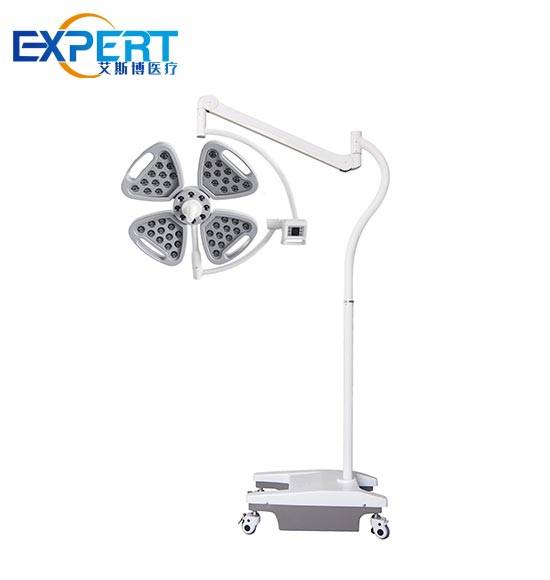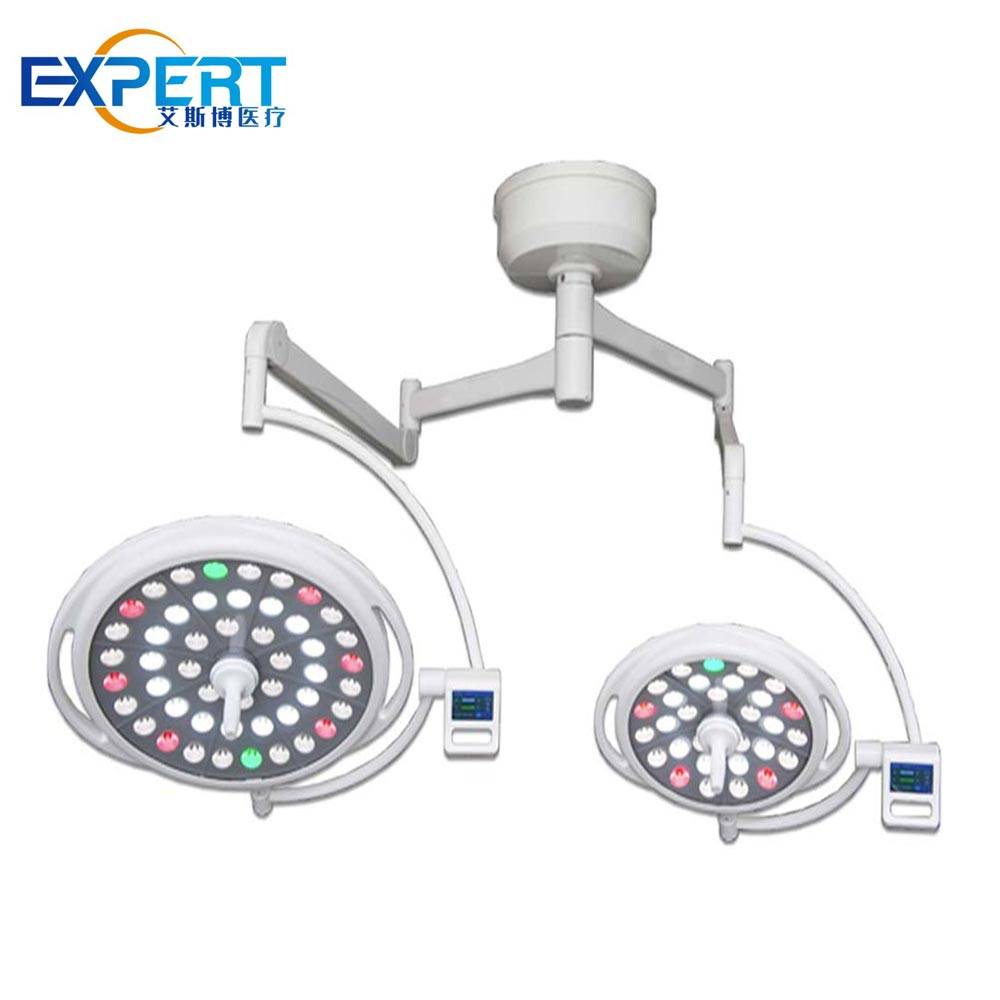Address
304 North Cardinal St.
Dorchester Center, MA 02124
Work Hours
Monday to Friday: 7AM - 7PM
Weekend: 10AM - 5PM
Address
304 North Cardinal St.
Dorchester Center, MA 02124
Work Hours
Monday to Friday: 7AM - 7PM
Weekend: 10AM - 5PM

When it comes to medical procedures, having the right operating light is crucial. Whether you're outfitting a hospital, clinic, or surgical suite, selecting the best operating light can directly impact the success of procedures and the safety of both patients and medical professionals. An ideal operating light ensures optimal visibility in the surgical field, reduces shadows, and helps medical teams perform with precision.
Welcome to My Blog!
Before we dive into the content, I’d love for you to join me on my social media platforms where I share more insights, engage with the community, and post updates. Here’s how you can connect with me:
Facebook:https://www.facebook.com/profile.php?id=100071234835011
LinkedIn:https://www.linkedin.com/company/74943205/admin/dashboard/
YouTube:www.youtube.com/@shandongexpertmedicalequip4695
TikTok:www.tiktok.com/@expertmedical
Now, let’s get started on our journey together. I hope you find the content here insightful, engaging, and valuable.
When it comes to medical procedures, having the right operating light is crucial. Whether you’re outfitting a hospital, clinic, or surgical suite, selecting the best operating light can directly impact the success of procedures and the safety of both patients and medical professionals. An ideal operating light ensures optimal visibility in the surgical field, reduces shadows, and helps medical teams perform with precision.
In this comprehensive guide, we’ll explore everything you need to know about choosing the right operating light for your needs. From understanding different types of operating lights to knowing how to evaluate their features, we’ve got you covered.

An operating light is a specialized light source designed for use during medical procedures. It provides bright, focused illumination to the surgical field, ensuring that healthcare professionals can perform surgeries, diagnostics, and procedures with accuracy. In operating rooms, light quality is essential for visibility, reducing errors, and ensuring patient safety.
Operating lights are typically mounted on ceilings, walls, or even used as mobile units, depending on the setup and requirements of the medical facility. Their advanced design helps to minimize shadows and optimize clarity in the surgical area, which is critical for both precision and efficiency during medical procedures.
When it comes to choosing the right operating light, one of the first factors to consider is the type of light that best suits your needs. There are several types of operating lights available, each with unique advantages.
Ceiling-mounted operating lights are the most common type used in modern operating rooms. They are fixed to the ceiling and provide adjustable illumination directly above the surgical table. These lights are ideal for large operating rooms, offering stability and precise control over the lighting.
Wall-mounted operating lights are installed on the wall near the operating table. They are typically adjustable, allowing for flexible positioning and focus on the surgical area. These lights are best for smaller spaces or when there’s a need for a supplementary light source in addition to a ceiling-mounted light.
Mobile operating lights are portable and can be moved around the operating room. These lights are often used in emergency situations, during procedures that require mobility, or in settings where fixed lighting solutions are not feasible.









Choosing the right operating light involves considering several important features that will impact its performance in the operating room. Here’s a breakdown of the most critical factors to consider:
Brightness is one of the most essential features of an operating light. During surgery, medical teams need a consistent and intense light source to illuminate the surgical site. High-intensity LED lights are now common in modern operating lights due to their long lifespan and superior brightness.
| Type of Light | Brightness Range | Lifespan (hrs) |
|---|---|---|
| LED Operating Lights | 120,000 – 160,000 Lux | 50,000 – 100,000 |
| Halogen Operating Lights | 80,000 – 100,000 Lux | 2,000 – 3,000 |
When choosing an operating light, it’s essential to select one with the correct brightness for your specific needs. For most surgeries, a brightness of 120,000 lux or higher is recommended to ensure optimal visibility.
Reducing shadows is another vital factor in operating light performance. Many modern operating lights are designed to minimize shadows by using multiple light sources (or multiple LEDs in one unit). This ensures that light is evenly distributed across the surgical field, which is essential for precision.
The color temperature of the light affects how accurate the colors appear in the surgical field. A color temperature between 4,000 to 5,000 Kelvin is ideal for most surgeries, as it mimics natural daylight. This range ensures that colors are rendered accurately, reducing the risk of errors that might occur due to poor lighting conditions.

Choosing the right operating light goes beyond technical specifications. Consider the type of medical procedures, space constraints, and the level of mobility required when making your selection.
Different types of surgeries and medical procedures may require specific lighting conditions. For example, delicate surgeries such as neurosurgery or ophthalmology require extremely focused lighting with minimal shadows. On the other hand, more general procedures may not require the same level of intensity or precision.
The size of your operating room and the mobility of the equipment also play a significant role in determining the right operating light. For larger rooms, ceiling-mounted lights may be ideal, while smaller spaces may benefit from wall-mounted or mobile solutions. Additionally, if your facility deals with emergency cases or frequently moves equipment, a portable operating light might be the best option.
While higher-end operating lights often come with advanced features, it’s essential to balance quality with budget constraints. LED lights, although more expensive initially, are energy-efficient and have a longer lifespan, which can lead to cost savings in the long term. Conversely, halogen lights may be more affordable upfront but require more frequent bulb replacements.
Choosing the right operating light is essential for optimizing medical procedures. Whether you’re outfitting an operating room for the first time or upgrading your current equipment, understanding the key features and selecting the right type of light for your space and procedures will help improve both patient outcomes and surgeon performance. Keep in mind factors like brightness, shadow reduction, color temperature, and mobility to ensure that your operating light meets the needs of your specific medical environment.
1. What is the ideal brightness for an operating light?
The ideal brightness for an operating light ranges from 120,000 to 160,000 lux, depending on the type of surgery. More delicate surgeries may require higher intensity lighting.
2. What is the difference between LED and halogen operating lights?
LED lights are more energy-efficient, have a longer lifespan, and provide brighter, more focused lighting than halogen lights. However, LED lights tend to be more expensive upfront.
3. Can operating lights be used for all types of surgery?
Yes, most modern operating lights are adjustable and versatile, making them suitable for a variety of surgical procedures, from general surgery to highly specialized operations like neurosurgery and ophthalmology.
4. How long do operating light bulbs last?
LED bulbs typically last between 40,000 to 50,000 hours, while halogen bulbs usually last around 2,000 to 3,000 hours.